Kids News explains what Anzac Day means and how it began
Each year on April 25 we commemorate Anzac Day. Kids News explains how the day began, what it means and how we commemorate it in Australia
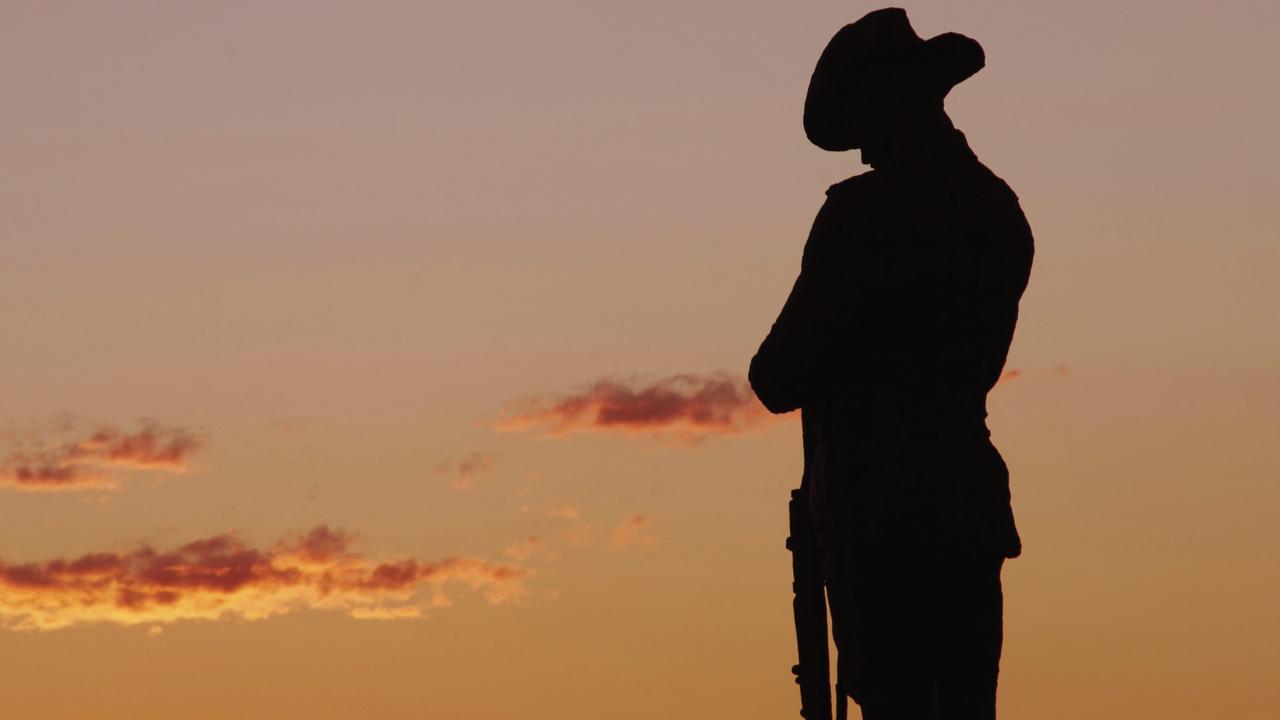
READING LEVEL: GREEN
WHAT IS ANZAC DAY?
Anzac Day, on April 25 each year, is a national day of remembrance* for Australians and New Zealanders at home and around the world.
The day marks the anniversary of the first big military action by Australian and New Zealand soldiers in World War I on April 25, 1915.
WHAT DOES THE WORD ANZAC MEAN?
ANZAC is the acronym* formed from the first letters of the words Australian and New Zealand Army Corps*.
It was first written as “A & NZ Army Corps”, when Australian and New Zealand soldiers were grouped together in Egypt waiting to go to Gallipoli, in Turkey, to start fighting. The soldiers who fought at Gallipoli became known as ANZACs.
From 1917, soldiers who had fought at Gallipoli wore an “A” badge on their uniform.
When referring to the Australian and New Zealand Army Corps, it’s written as ANZAC (in capital letters), and mostly as Anzac (in lower case letters) for other things such as Anzac Day or Anzac biscuits.

WHERE IS GALLIPOLI? WHAT HAPPENED THERE?
Gallipoli is a narrow peninsula* of land in modern-day Turkey.
When Britain went to war in 1914, Australia went to war to support Britain as an ally*.
In 1915, Australian and New Zealand soldiers were part of the effort to seize the Gallipoli Peninsula from the Ottoman Empire (Turkey). The aim was to move across the land and eventually capture Constantinople (now Istanbul), the capital of the Ottoman Empire, which was an ally of Germany.
The Australian and New Zealand soldiers first landed on the beaches of Gallipoli at dawn on April 25, 1915, meeting strong resistance from the Ottoman Turkish soldiers. The fighting dragged on for eight months before the allies were evacuated from the peninsula.
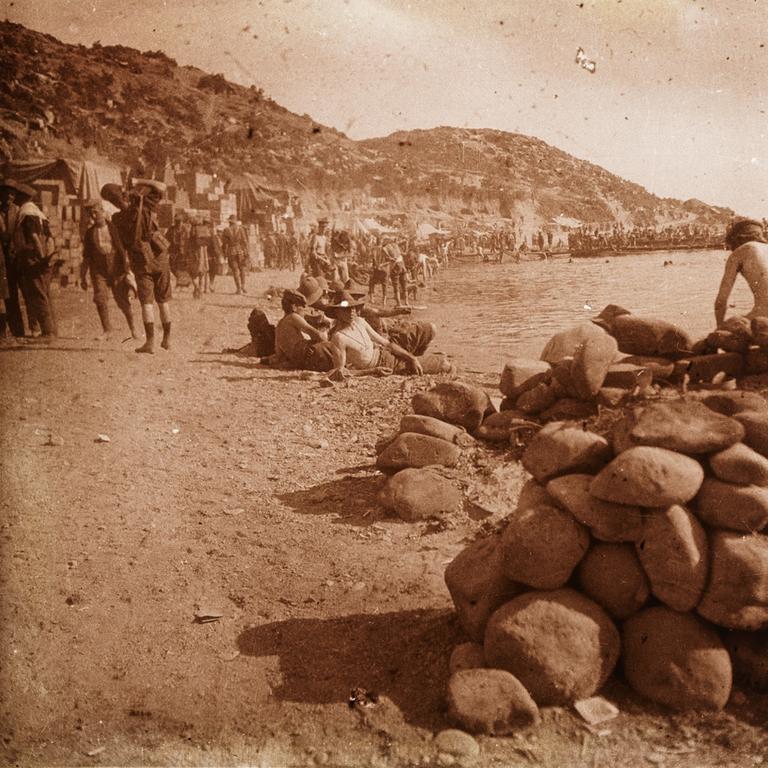
Many soldiers of all nationalities involved in the fighting were killed at Gallipoli, including more than 8000 Australians. Many more were injured and all had endured terrible conditions, including extreme heat, strong wind, rain and snow, loud noises from weapons and the grief* of having people hurt or dying around them.
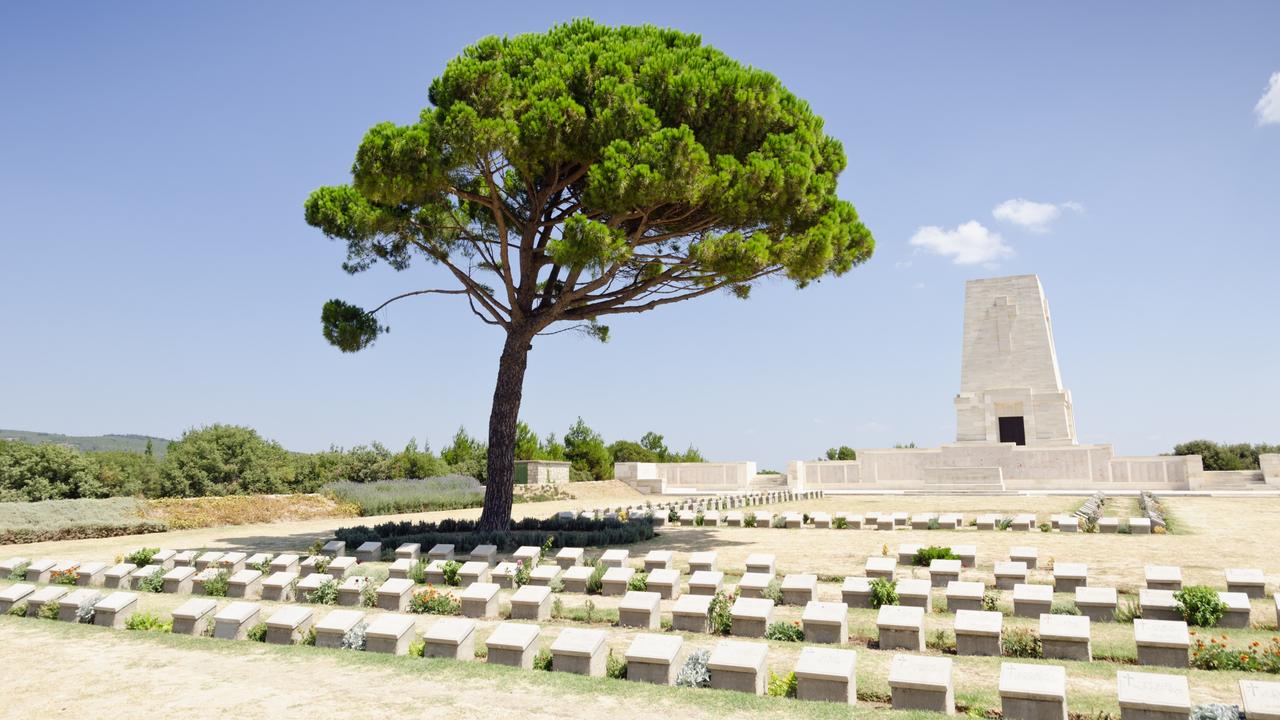
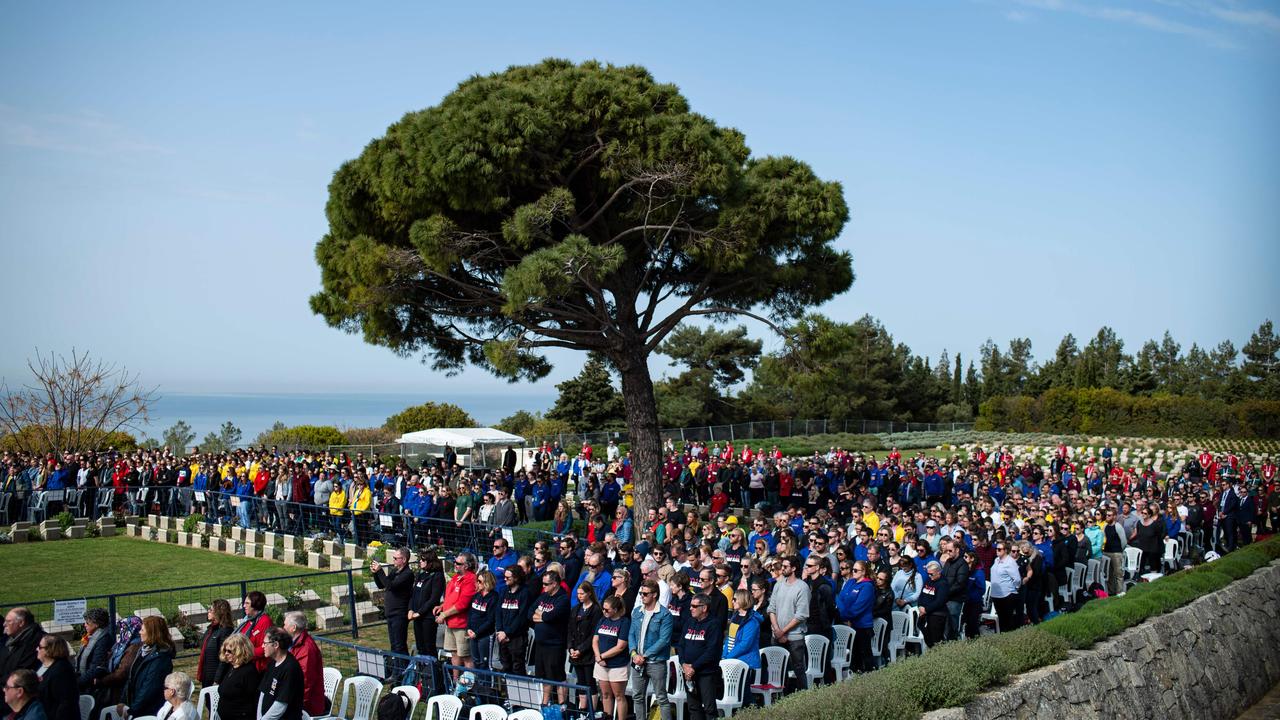
WHY DO WE STILL REMEMBER GALLIPOLI?
We remember Gallipoli to remember and honour the soldiers who fought and died or were injured there.
Although the goal of seizing Gallipoli and advancing towards Constantinople wasn’t achieved, the toughness and the bravery of the ANZACs became well known in Australia and New Zealand and around the world and helped give rise to what has become known as the “Anzac legend”.

Many people believe that the Anzac legend – sometimes talked about as meaning being hard working, tough, brave and fair and looking after your mates – is either something that defines us today, or that it is something we should remember, celebrate and aspire to.
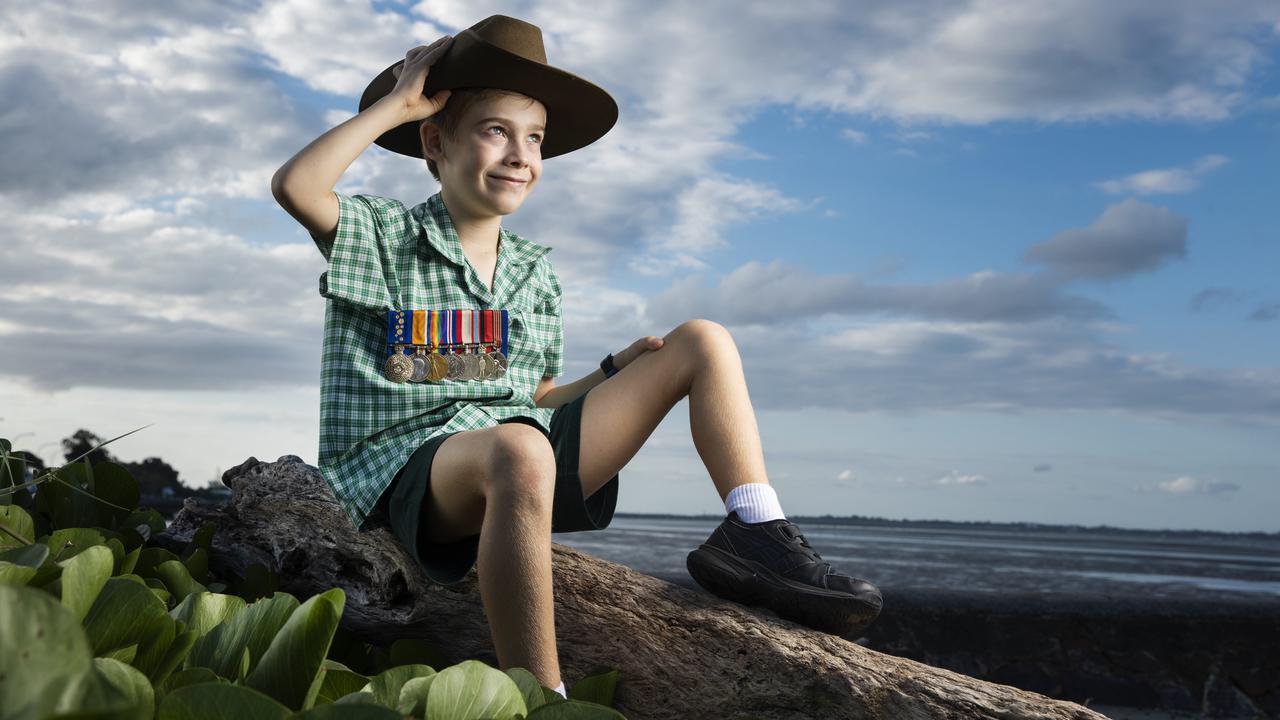
WHEN WAS THE FIRST ANZAC DAY?
The first Anzac Day commemorations were held on April 25, 1916. There were services and marches by soldiers and nurses across Australia, a sports day in the Australian military camp in Egypt and a march by more than 2000 Australian and New Zealand soldiers through London. A London newspaper headline called the marching soldiers “the knights of Gallipoli”. For the remainder of World War I, Anzac Day was used as an opportunity to recruit more people into the armed forces.
In the 1920s, Anzac Day became a national day to remember the more than 60,000 Australians who died during World War I.
All the traditions of modern Anzac Day commemorations were in place by the 1930s.
Over time the day also commemorated those who served and died during World War II and, later, other military and peacekeeping operations.
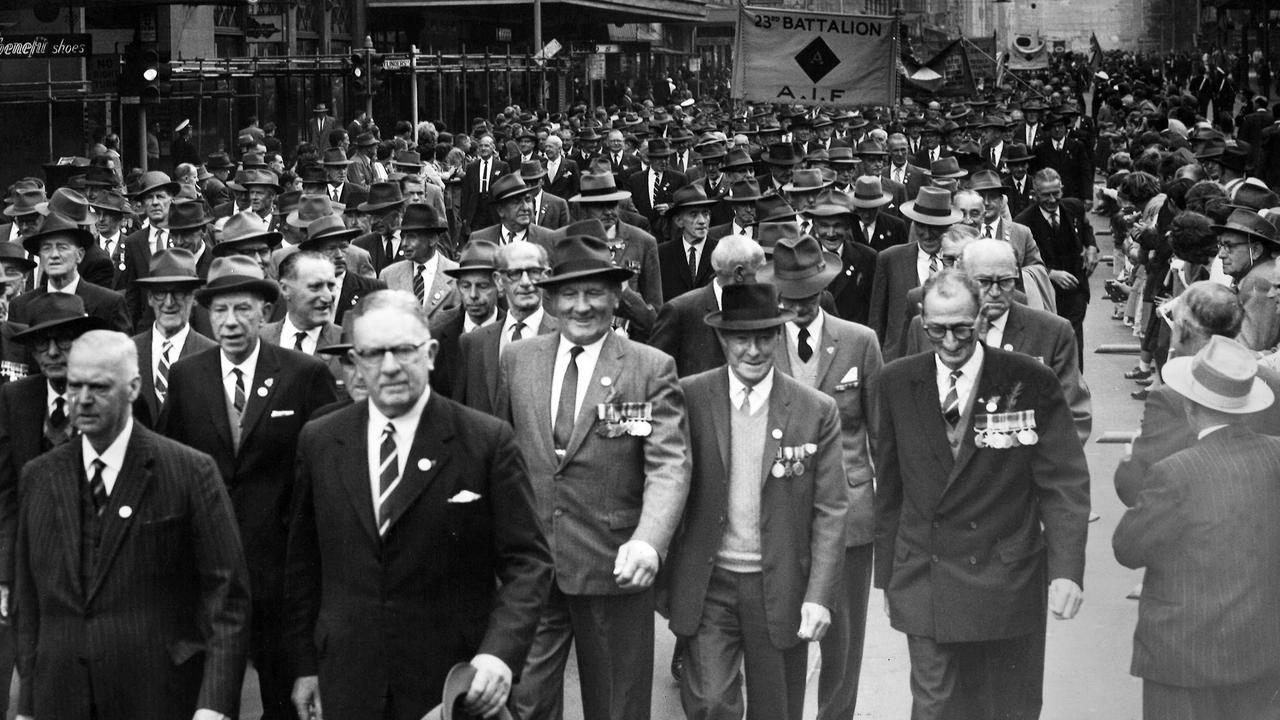
HOW DO AUSTRALIANS USUALLY OBSERVE ANZAC DAY?
Australians attend commemorative services around Australia, at Gallipoli and elsewhere around the world at dawn, the time of the original landing. These are called Dawn Services.
Later on Anzac Day, former servicemen and servicewomen meet up and march through towns and cities. If a former serviceman or servicewoman is no longer alive, their family members sometimes march for them, wearing their medals of service.
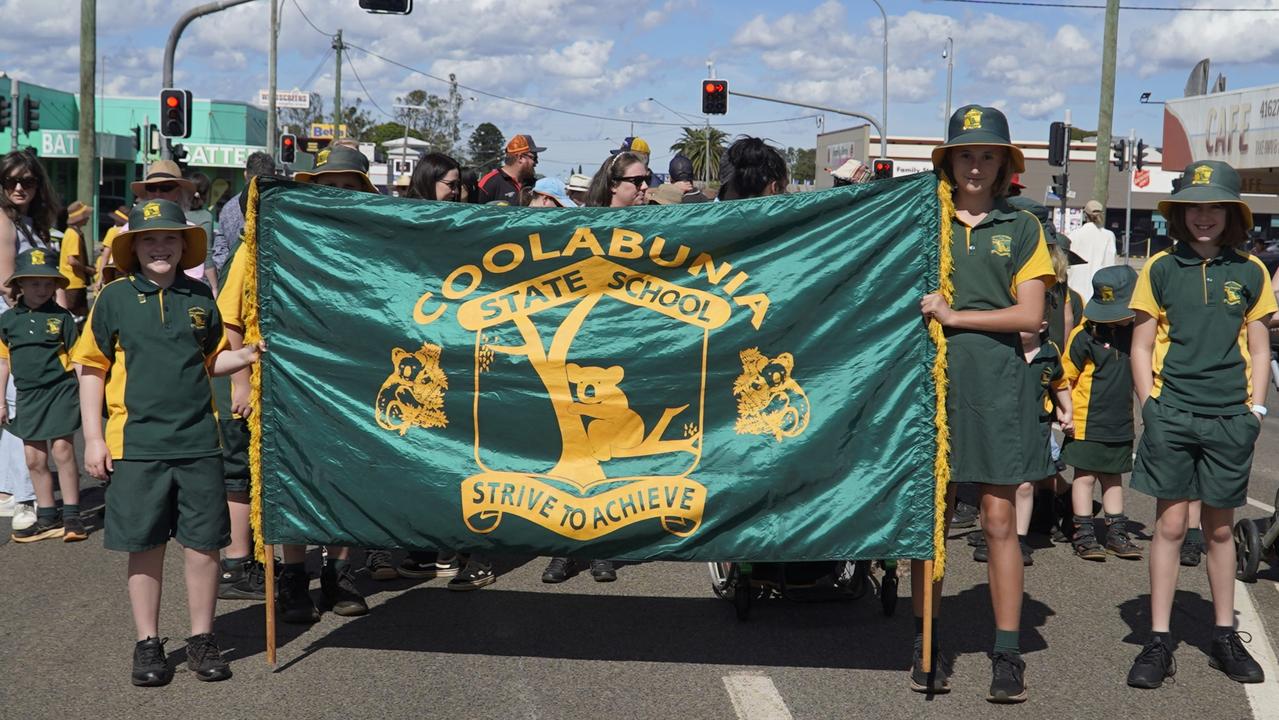
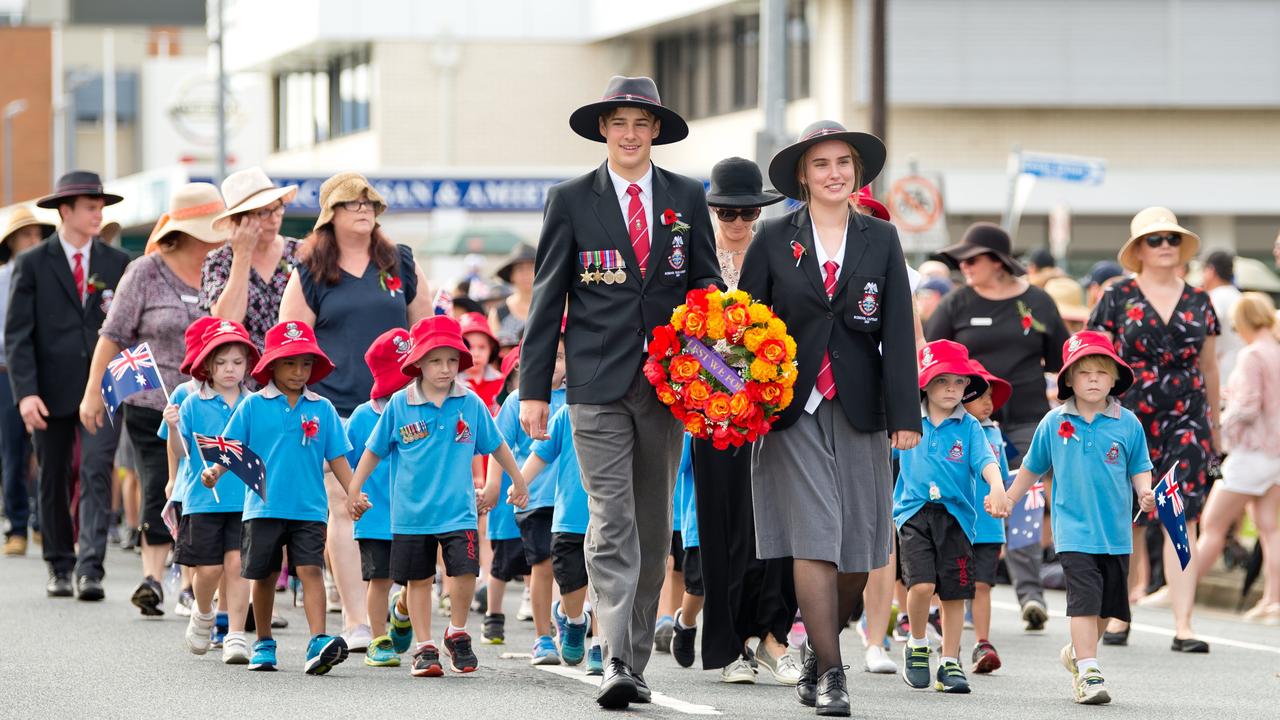
WHAT HAPPENS AT A DAWN SERVICE?
At the Australian War Memorial in Canberra, ACT, the national Dawn Service begins with the traditional order of service, including the veteran’s* march, commemorative address, laying of wreaths, hymns*, the sounding of the Last Post, one minute’s silence, and the national anthems of New Zealand and Australia.
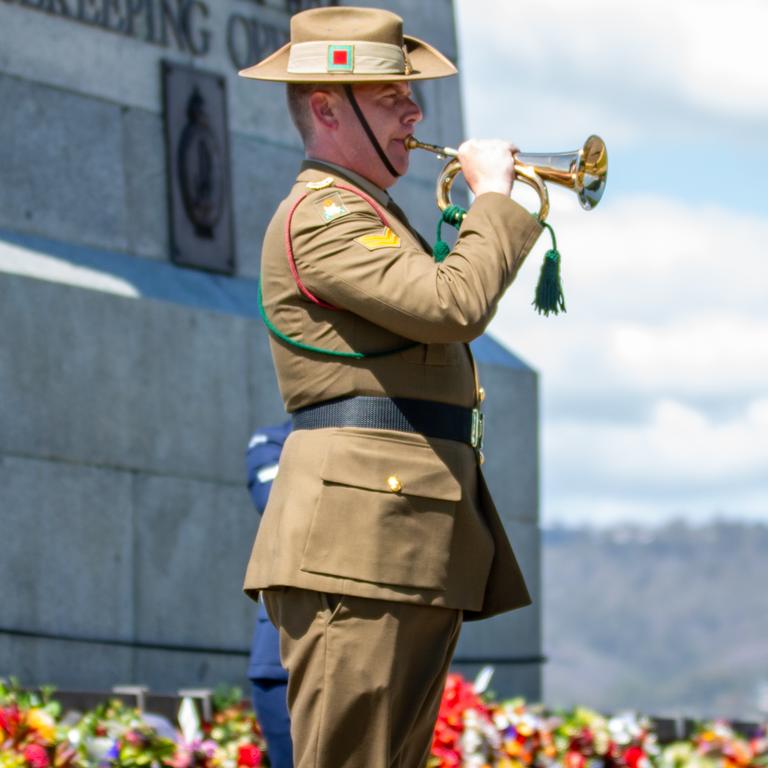
The bugle call known as the Last Post signifies the end of a soldier’s day. It is sounded at Anzac Day and Remembrance Day services, and also at military funerals to indicate that the soldier has gone to his final rest.
Most Dawn Services at other locations follow a similar format.

PM OBSERVED ANZAC DAY ON THE KOKODA TRACK
Anthony Albanese made history in 2024 when he became the first sitting Prime Minister to walk part of the gruelling* Kokoda Track in Papua New Guinea.
Mr Albanese said the trek* allowed him to pay respect to the Australians who fought and died during the important World War II battle of Kokoda.

In a Sunday Telegraph opinion piece on 28 April, 2024, Mr Albanese said there were “few experiences more humbling than to walk the Kokoda Track.”
“In 1942, in a place that now feels like paradise, 625 Australians were killed. That is the great weight of history you feel on the Kokoda Track, that great artery of mud and suffering and perseverance that holds a place of such power in Australia’s shared memory – and PNG’s” he said.
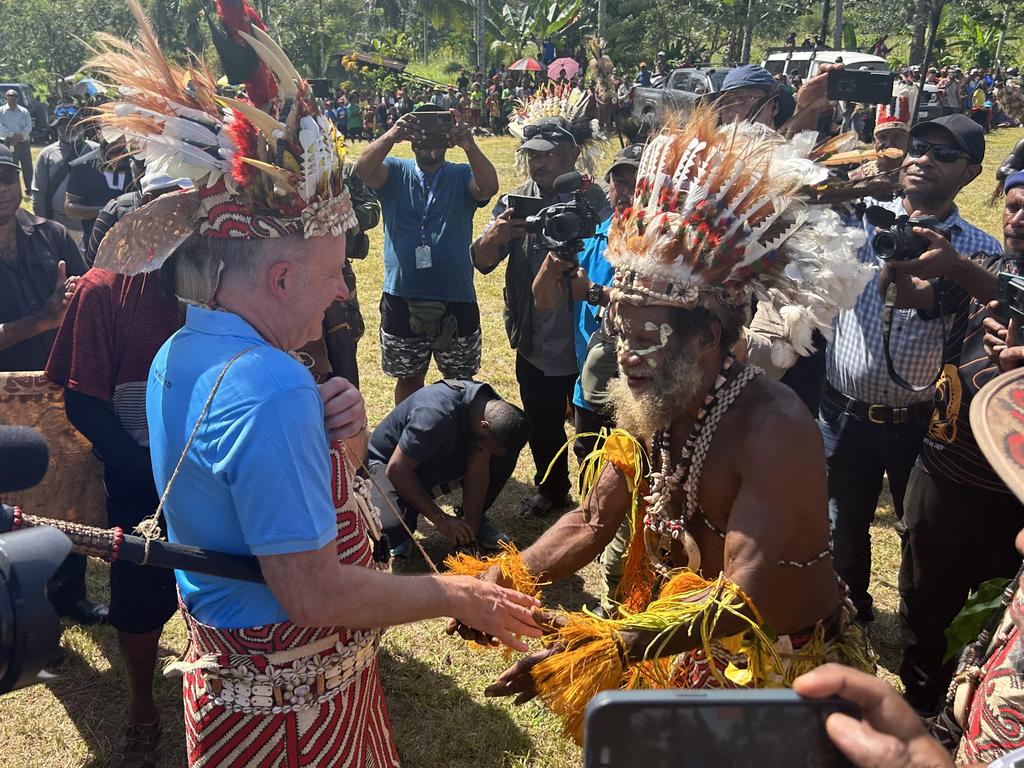
Joined on the trek by PNG Prime Minister James Marape and Australian Defence Force representatives, the group walked 17km of the 96km track from Kokoda Village through the jungle to Isurava Village, where he joined everyday Australians and Papua New Guineans for the annual Isurava Anzac Day service.
“So many Papua New Guineans helped Australians – troops, coast watchers, shipping pilots, nurses and carers,” Mr Albanese said.
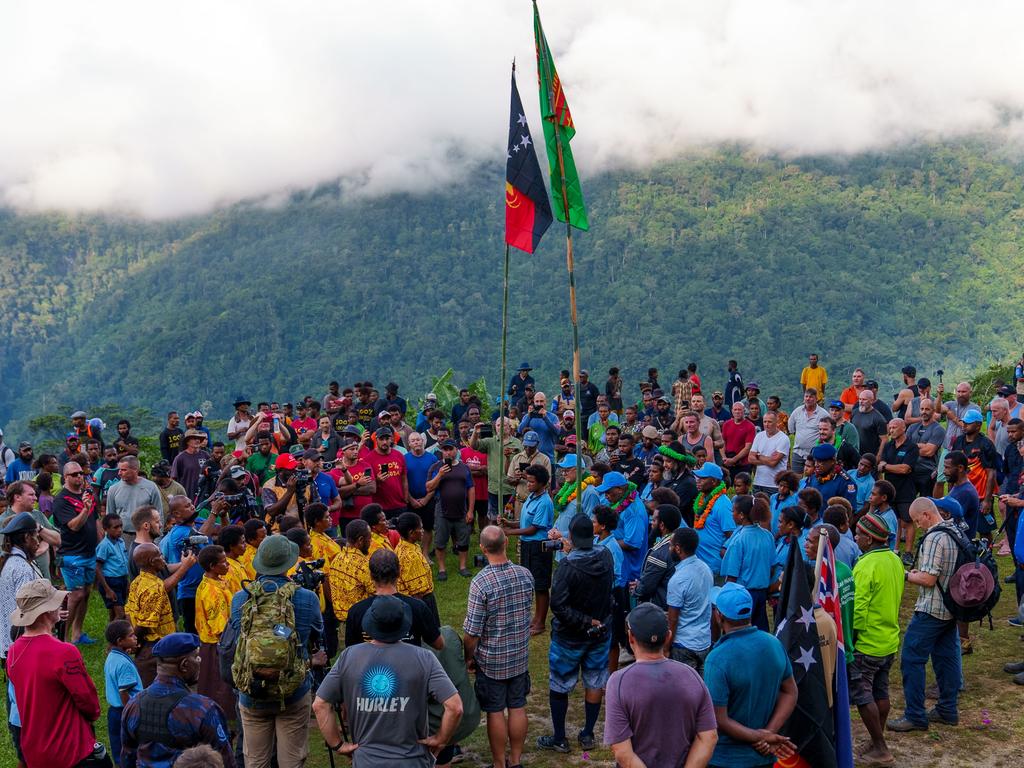
“Villagers who risked their lives. Stretcher bearers whose courage was matched only by their kindness.
“They were angels walking tall through the hell of war.
“Together with our extraordinary soldiers, they cemented the powerful bond and friendship between Australia and Papua New Guinea that lasts to this day.
“All this was on my mind when we reached Isurava, the scene of the battle that claimed the lives of 99 Australians and wounded another 111.
“What a solemn privilege it was to join all the Australians and Papua New Guineans on that hallowed ground for the Anzac Day Dawn Service and utter the words: ‘Lest we forget’.”
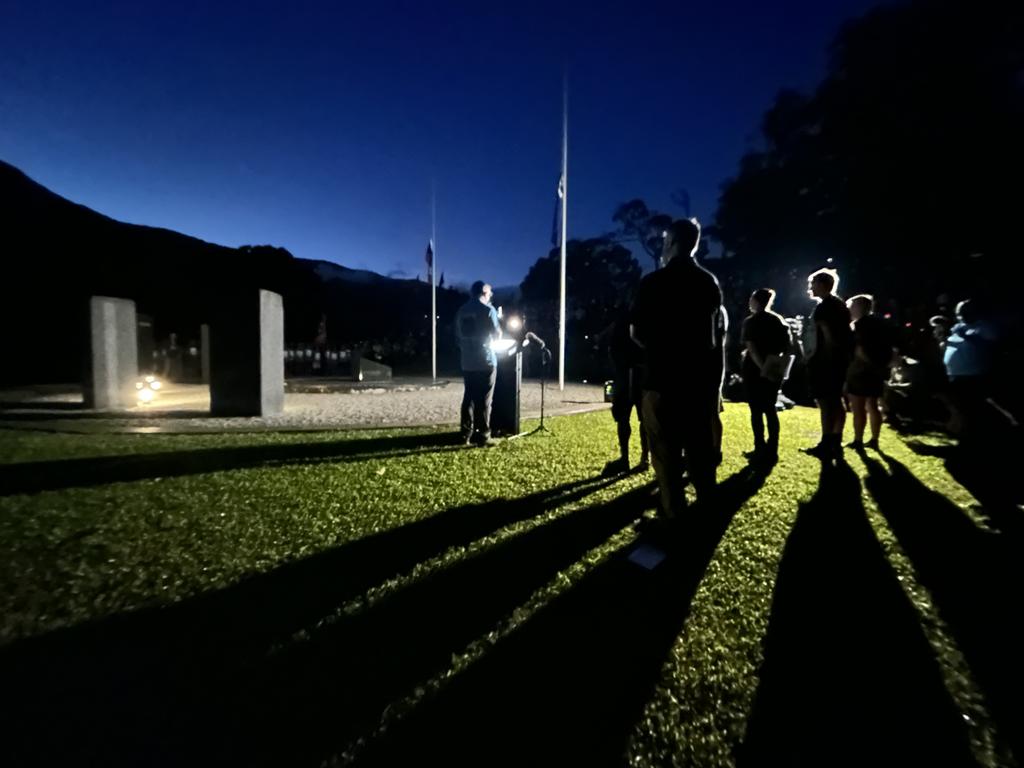
The Kokoda campaign, which began in July 1942 and lasted until November, was part of Japan’s attempt to capture Port Moresby when it was an Australian territory.
For Australian forces, successfully holding Port Moresby was crucial in defending Australia.
“Kokoda is the stuff of legend,” Mr Albanese said.
Papuan Infantry Battalion soldiers fought alongside Australians, while thousands of civilians* – who became known as the “Fuzzy Wuzzy Angels” – provided support, carrying supplies, building bases and evacuating* the sick and wounded.
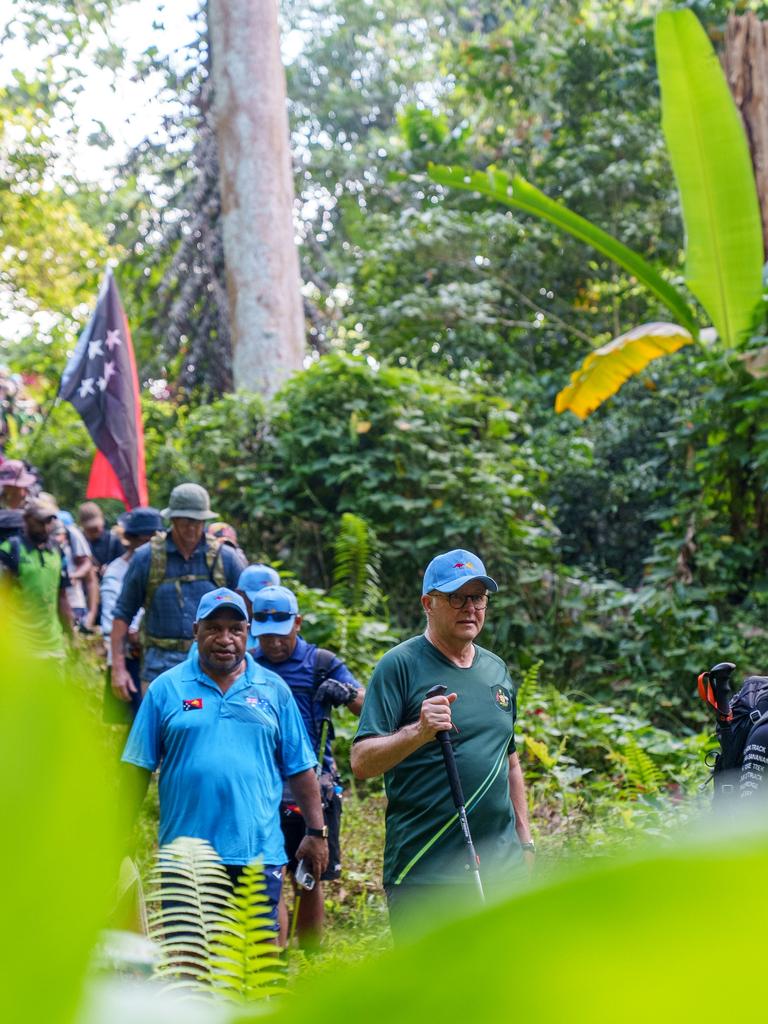

HOW TO COMMEMORATE ANZAC DAY IF YOU’RE TRAVELLING
Anzac Day regularly falls in school holidays in some states and territories. When April 25 happens to fall on a Friday or a Monday, it sets up most Australians for a long weekend.
And what do Australians like to do with their free time? Travel!
But this public holiday is special. It’s not just a day off school or work. The public holiday exists so that Australians of all ages can observe Anzac Day and commemorate all those men and women who have contributed to the defence of the Australian way of life we hold so dear.

Since 1885, more than 100,000 Australians have made the ultimate sacrifice and never returned home to their families.
So it’s important that we continue to honour those who have died, been injured and served their country.
The Returned and Services League – Queensland has suggested the following ways you can still pay your respects even if you’re travelling this Anzac Day.

- Take some Anzac biscuits on the road: No Anzac Day is complete without these golden, oaty treats.
- Recite the Ode: The Ode recited at Anzac Day commemorations is the fourth stanza of Laurence Binyon’s poem For the Fallen, first published in the London Times in 1914. A lovely way to honour the service and sacrifice of all military personnel is to recite it with your loved ones and reflect on its meaning:
They shall grow not old, as we that are left grow old;
Age shall not weary them, nor the years condemn.
At the going down of the sun and in the morning
We will remember them.
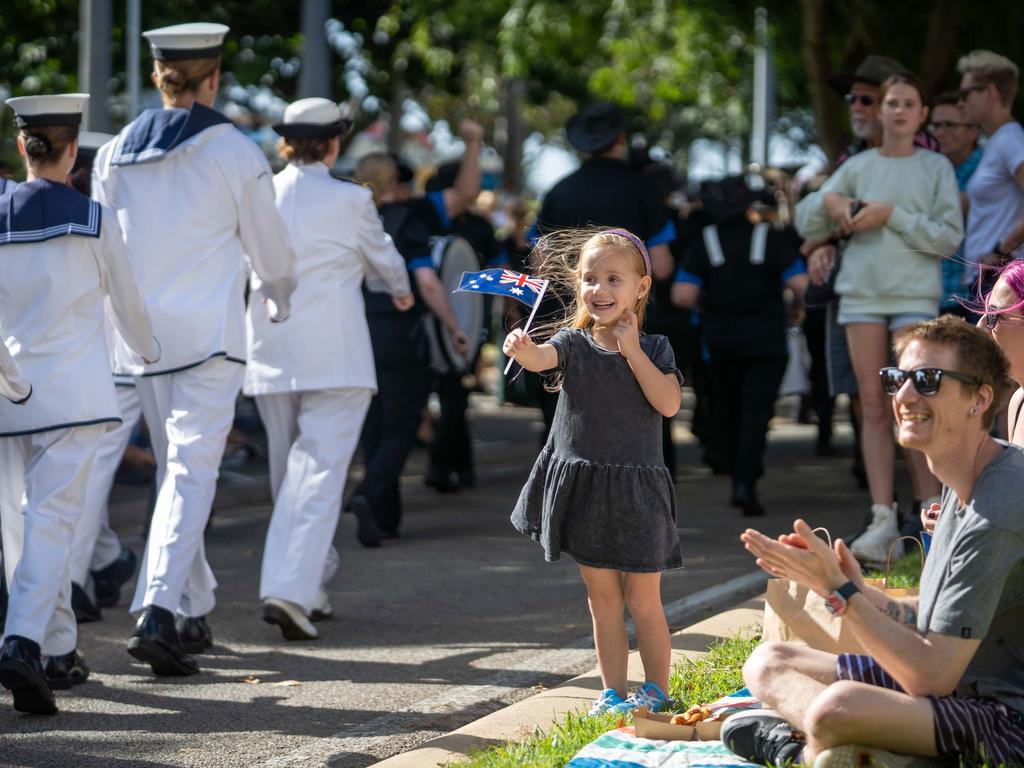
- Attend a nearby Anzac Day service: every town you pass through on Anzac Day will almost certainly be holding commemorative services. Everyone is welcome to attend these public events.
- Listen to a service on the go: tune into an Anzac Day broadcast
- Share stories and family history: long trips are the perfect time to as your parents and guardians about your family’s history of service – and if they don’t know, then finding out later would make a terrific research project. You can get started right away!
GLOSSARY
- remembrance: the action of remembering something, particularly people who have died
- military: armed forces such as army, navy and air force
- acronym: first letters from words in a phrase or title that make a new word
- Corps: a main group within an army
- peninsula: narrow piece of land jutting out into surrounding water
- ally: person or group to work alongside for the same goal
- grief: emotional response to loss
- veteran: someone who has experienced something, especially a soldier who has been to war
- hymns: religious songs
- gruelling: extremely exhausting
- trek: a long walk
- Diggers: a nickname for the Anzacs
- civilians: a person not in the military or police force
- evacuating: removing from danger to a safer place
EXTRA READING
Mystery Aussie WWI soldiers identified
Aussies want mass light salute on Anzac Day
Kids told to ‘just ask’ about war stories
QUICK QUIZ
- What do the letters A.N. Z. A. C stand for?
- In what year did the Australian and New Zealand soldiers first land at Gallipoli?
- When was the first Anzac Day and what happened?
- Explain when the Last Post is played and what it signifies.
- What city and territory is the Australian War Memorial in?
LISTEN TO THIS STORY
CLASSROOM ACTIVITIES
1. What have you learnt?
There is a lot of information in this article about Anzac Day. How it began, when it was first celebrated what happens at the services and much more!
Read through the article carefully looking for information that is new to you.
Write five pieces of information from this article, that you already knew about Anzac Day.
Write four pieces of information from the article, that you did not know before.
Write three questions related to Anzac Day that you would still like to find out about
Write two pieces of information related to Anzac Day that you know, that is not in this article.
Write one thing you will do this year to commemorate Anzac Day.
Time: allow 15 minutes to complete this activity
Curriculum Links: English, Humanities and Social Sciences – History, Personal and Social Capability
2. Extension
What does Anzac Day mean to you? Do you have a personal connection with someone who was involved in World War I (a grandparent or great grandparent)? Or know someone or of someone who was involved in another war? Is there someone you know who is in the defence forces now? Have you heard stories about the mateship and bravery of our soldiers? Or do you have another perspective? Look through some of the activities suggested by the Australian War Memorial that you can do from home this year.
Write a paragraph that explains how you feel about Anzac Day and what it means to you and why it is an important day for Australians and New Zealanders.
Time: allow 20 minutes to complete this activity
Curriculum Links: English, Humanities and Social Sciences – History, Personal and Social Capability
VCOP ACTIVITY
Proper noun police
A proper noun is a noun that names a particular person, place or thing. It always has a capital letter.
How many proper nouns can you find within this article? Find them all and sort them into the category of name, place, time (date/month).
Can you find any proper nouns included in your writing?
What are they?
Can you sort them into their categories?

